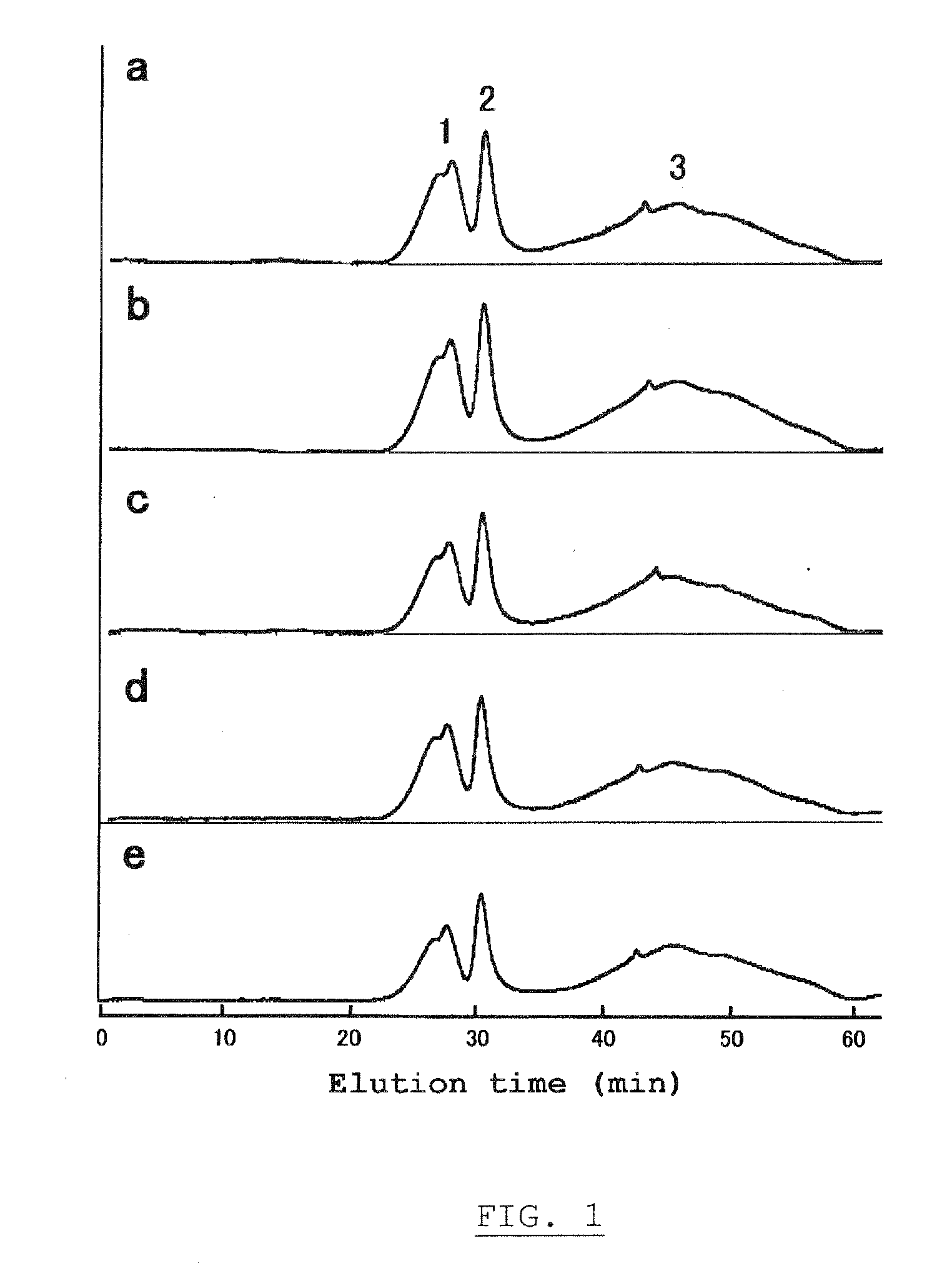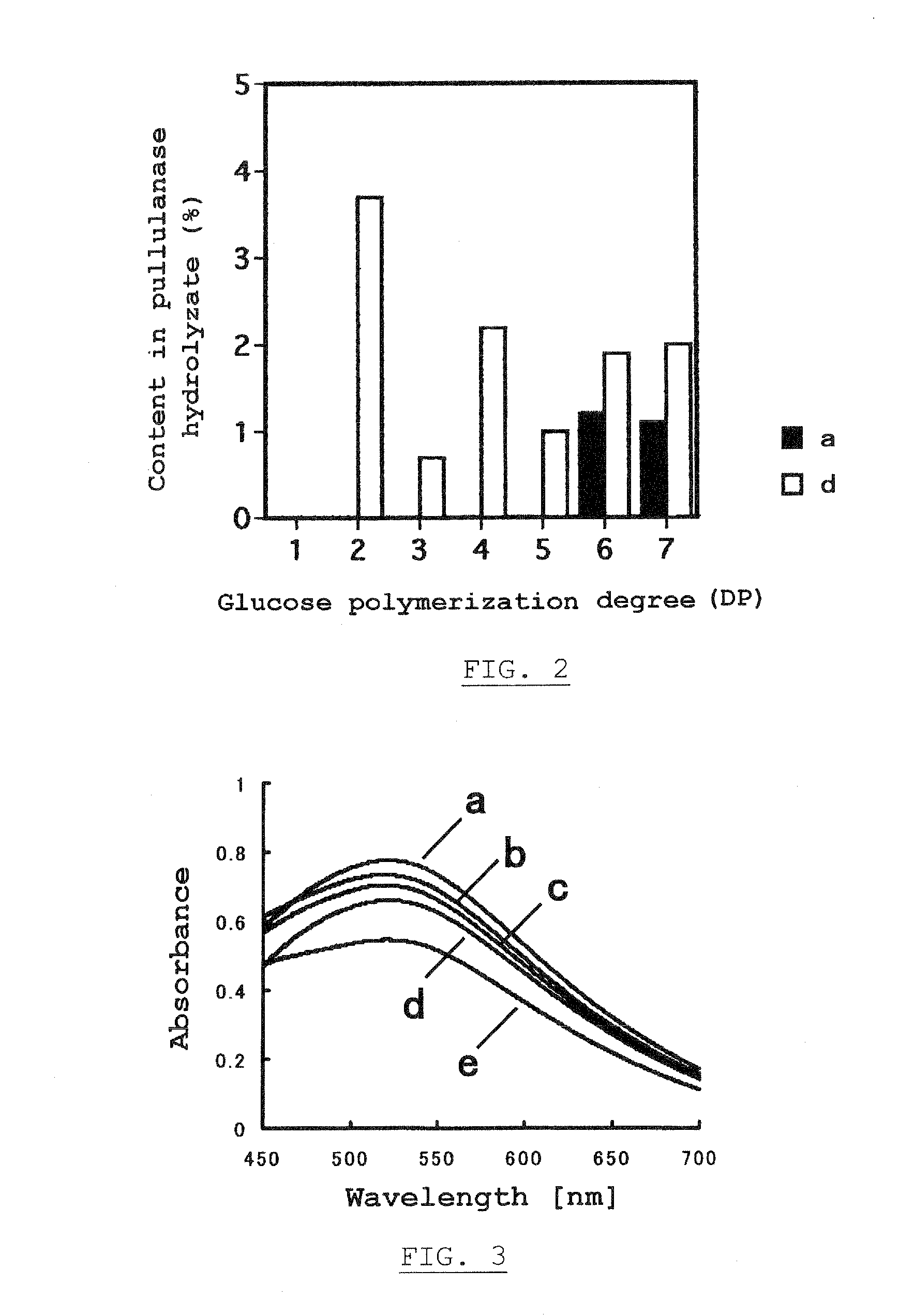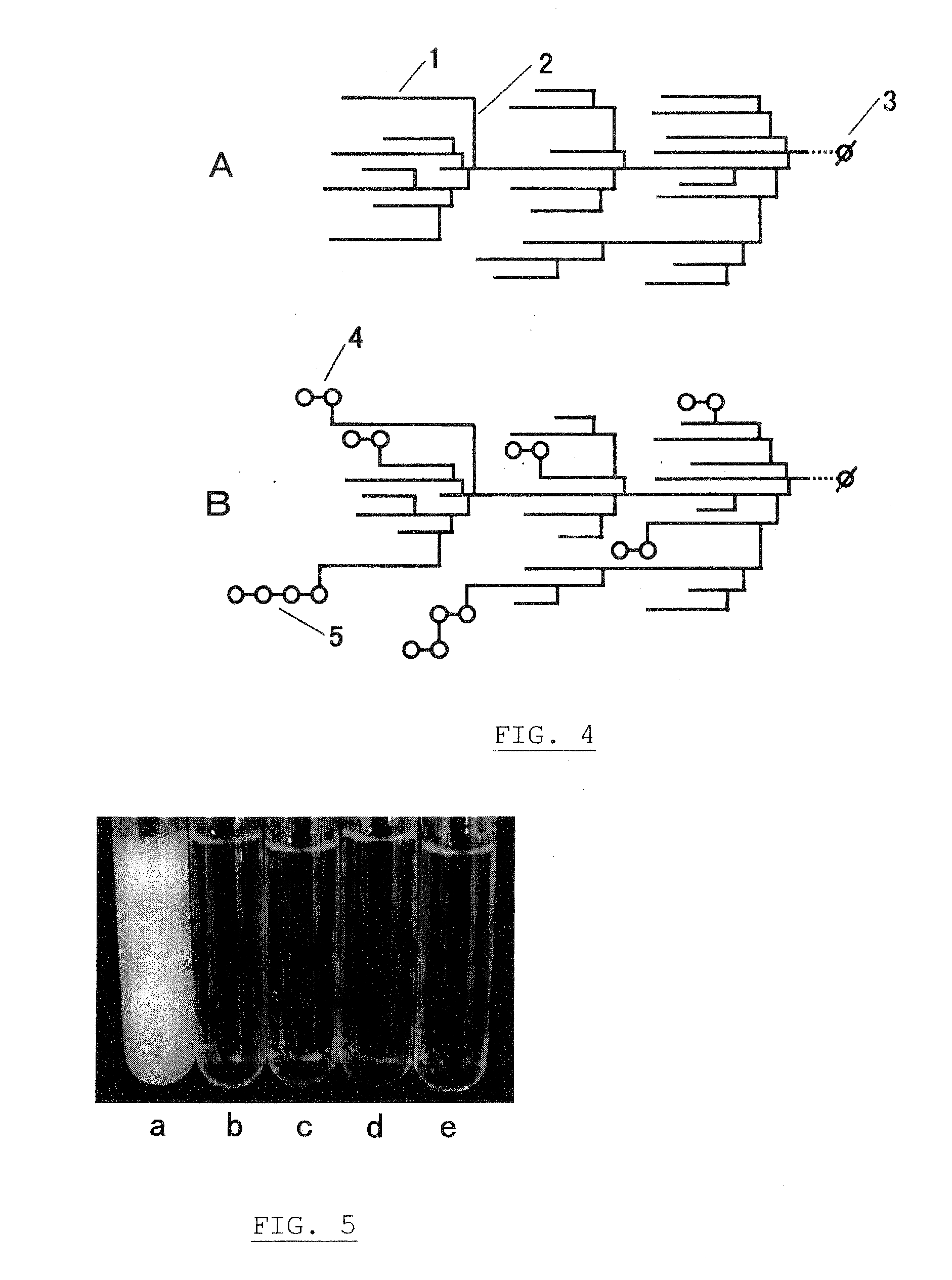Highly-branched starch, its production and uses
- Summary
- Abstract
- Description
- Claims
- Application Information
AI Technical Summary
Benefits of technology
Problems solved by technology
Method used
Image
Examples
experiment 1
Preparation of CMM-Forming Enzyme
[0062]Prior to the following experiments, CMM-forming enzyme preparation was prepared by culturing Arthrobacter globiformis M6, FERM BP-8448, and purifying the resulting enzyme in culture supernatant.
experiment 1-1
[0063]Cultivation of Arthrobacter globiformis M6
[0064]A liquid culture medium consisting of 1.5% (w / v) of “Pinedex #4” (a partial starch hydrolysate commercialized by Matsutani Chemical Industries Co., Ltd.), 0.5% (w / v) of “POLYPFEPTONE” (a yeast extract commercialized by Nihon Pharmaceutical Co., Ltd.), 0.1 (w / v) of “YEAST EXTRACT S” (a yeast extract commercialized by Nihon Pharmaceutical Co., Ltd.), 0.1% (w / v) of dipotassium phosphate, 0.06% (w / v) of sodium phosphate dehydrate, 0.05% (w / v) of magnesium sulfate hepta-hydrate, 0.3% (w / v) of calcium carbonate, and water was placed in two 500 ml-Erlenmeyer flasks in a respective amount of 100 ml, sterilized by autoclaving at 121° C. for 20 min, and cooled. Successively, the culture medium was inoculated with Arthrobacter globiformis M6, FERM BP-8448, and followed the cultivation under rotary-shaking conditions at 27° C. and 230 rpm for 48 hours to prepare a seed culture. About 20 L of a fresh preparation of the same liquid culture med...
experiment 1-2
[0071]Purification of CMM-Forming Enzyme About 9.2 L of the culture supernatant was salted out by adding ammonium sulfate to give finally 60% saturation and allowing it to stand at 4° C. for 24 hours. The resultant precipitates were collected by centrifuging at 11,000 rpm for 30 min, dissolved in 10 mM Tris-HCl buffer (pH 7.5), and dialyzed against the same buffer to obtain about 240 ml of a crude enzyme solution. The crude enzyme solution was subjected to anion-exchange column chromatography using 100 ml of “DEAE-TOYOPEARL 650S” gel (an anion-exchange gel commercialized by Tosoh Corporation). CMM-Forming enzyme activity was adsorbed on “DEAE-TOYOPEARL 650S” gel pre-equilibrated with 10 mM Tris-HCl buffer (pH 7.5) and when eluted with a linear gradient increasing from 0 M to 0.4 M of sodium chloride, CMM-forming enzyme activity was eluted at about 0.22M of sodium chloride. The active fractions were collected and added ammonium sulfate to give a final concentration of 1 M, and then a...
PUM
| Property | Measurement | Unit |
|---|---|---|
| Temperature | aaaaa | aaaaa |
| Temperature | aaaaa | aaaaa |
| Temperature | aaaaa | aaaaa |
Abstract
Description
Claims
Application Information
 Login to View More
Login to View More - R&D
- Intellectual Property
- Life Sciences
- Materials
- Tech Scout
- Unparalleled Data Quality
- Higher Quality Content
- 60% Fewer Hallucinations
Browse by: Latest US Patents, China's latest patents, Technical Efficacy Thesaurus, Application Domain, Technology Topic, Popular Technical Reports.
© 2025 PatSnap. All rights reserved.Legal|Privacy policy|Modern Slavery Act Transparency Statement|Sitemap|About US| Contact US: help@patsnap.com



